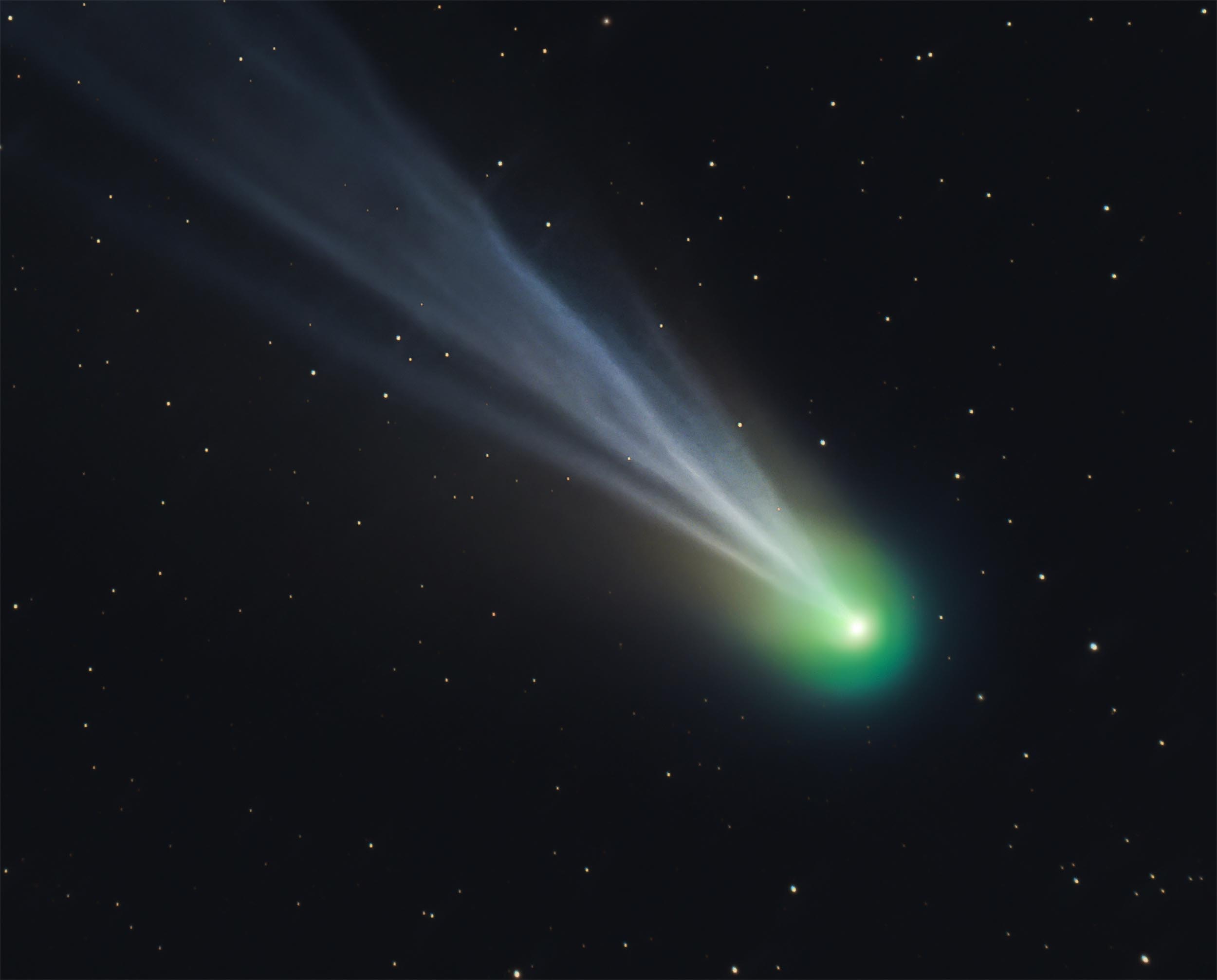New observations of comet 12P/Pons Brooks have pinned down a D/H ratio in its water that matches Earth’s oceans within acceptable uncertainties. This unexpected discovery tightens the link between cometary ice and the water at our taps.
For the first time, researchers mapped ordinary water and deuterium bearing water in a comet’s coma using ALMA, giving spatial detail that nailed the source and sharpened the measurement.
Who led the study
Martin Cordiner of NASA’s Goddard Space Flight Center led the international team that combined ALMA and the NASA Infrared Telescope Facility (IRTF).
“Our new results provide the strongest evidence yet that at least some Halley type comets carried water with the same isotopic signature as that found on Earth, supporting the idea that comets could have helped make our planet habitable,” said Cordiner.
“By mapping both H2O and HDO in the comet’s coma, we can tell if these gases are coming from the frozen ices within the solid body of the nucleus, rather than forming from chemistry or other processes in the gas coma,” said Stefanie Milam from NASA’s Goddard and co-author of the study.
Isotopes explain Earth’s water
Water is H2O, but the hydrogen can be the heavy isotope deuterium, so scientists track the D/H ratio to compare water across the solar system and test shared origins or separate histories.
Different comets have shown different D/H values in the past, which complicated the idea that comets filled Earth’s oceans.
A warm inner solar system comet, 103P/Hartley 2, carried water with a D/H close to Earth’s, measured with the Herschel telescope in 2011 and often cited as evidence for icy deliveries from small bodies.
Other targets pulled in the opposite direction. Rosetta sampled 67P/Churyumov Gerasimenko and found a much higher D/H, pointing to diverse water reservoirs among comets.
Meteorites have long weighed in too. Many carbonaceous chondrites (a rare type of primitive stony meteorite characterized by their high carbon content and other volatile elements) show ocean-like water, which led many researchers to favor asteroids over comets as the main source of Earth’s water supply.
What comet 12P reveals
12P/Pons Brooks belongs to Halley-type comets, objects with orbits between 20 and 200 years that sweep through the inner solar system only now and then.
Its orbital period is about 71 years according to NASA Jet Propulsion Lab’s (JPL’s) Small-Body Database (SBD) database, so it gives us rare chances to study an icy body that likely formed far from the Sun.
Many members of this class are thought to originate in the Oort cloud, a distant reservoir of small icy bodies nudged inward over time, which means their ice can preserve early solar system conditions.
Measuring comet 12P water
ALMA’s interferometry links many antennas to create high resolution images at millimeter wavelengths, letting scientists map where molecules arise within the coma rather than just tallying totals along a line of sight.
The group paired ALMA’s maps with near infrared measurements from the NASA IRTF, using its iSHELL spectrograph to track water and companion gases that inform composition and context.
That one-two approach narrowed uncertainties enough to report a D/H with a precision that separates it from many past comet results.
Earth-like water in 12P is important
If some Halley-type comets carry ocean-like water, then the roster of plausible couriers expands beyond certain asteroids and a few Jupiter family comets.
A mixed delivery, timed during heavy bombardment in early Earth history, remains a coherent picture that many geochemists and dynamicists can test with new targets.
Comets also carry carbon based molecules. ROSINA (Rosetta Orbiter Spectrometer for Ion and Neutral Analysis) mass spectrometer identified the amino acid glycine and phosphorus at 67P, a reminder that icy bodies can ship both water and life’s raw materials together to rocky worlds.
Why comets show different water
Different formation zones, thermal histories, and processing by sunlight and cosmic rays can tweak isotope ratios in ices.
That leads to the mix of D/H values seen so far, including the high number at 67P and Earth-like water at Hartley 2 and now 12P.
Sampling a broader set of Oort cloud and Halley-type objects will show whether 12P sits at one end of a spectrum or marks a common pattern for this family.
Comet 12p and future space missions
Future campaigns can repeat the ALMA plus IRTF playbook on other periodic comets as they approach the Sun.
Missions on the horizon, such as Comet Interceptor, aim to visit a dynamically pristine object and could take isotope studies off Earth entirely with in situ measurements.
Each target with a precise D/H moves the debate from broad strokes to fine lines, where models of solar system dynamics and geochemistry either hold water or spring leaks.
12P passed perihelion in April 2024, which brought its activity within reach of powerful facilities that did not exist during many earlier apparitions.
Timing, instrumentation, and careful cross calibration combined to give the field a clean measurement that others can challenge or confirm with comparable methods.
Precision like this offers a stepping stone toward a full inventory of small-body water sources across different dynamical classes and origins. This is a leap forward, even by today’s technological standards.
What we still need to learn
Isotope ratios in other molecules, such as nitrogen and oxygen species, will further test shared heritage between cometary ices and Earth’s reservoirs.
Linking those chemical fingerprints with dynamical simulations of how material moved around the young solar system will sharpen which bodies delivered what, and when.
A handful of well measured comets can anchor those models, but the goal is a population view that explains the widespread seen so far without special pleading.
The study is published in Nature Astronomy.
—–
Like what you read? Subscribe to our newsletter for engaging articles, exclusive content, and the latest updates.
Check us out on EarthSnap, a free app brought to you by Eric Ralls and Earth.com.
—–
